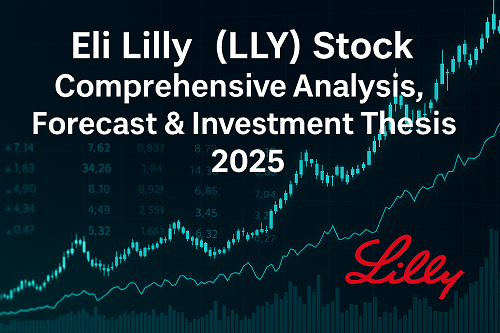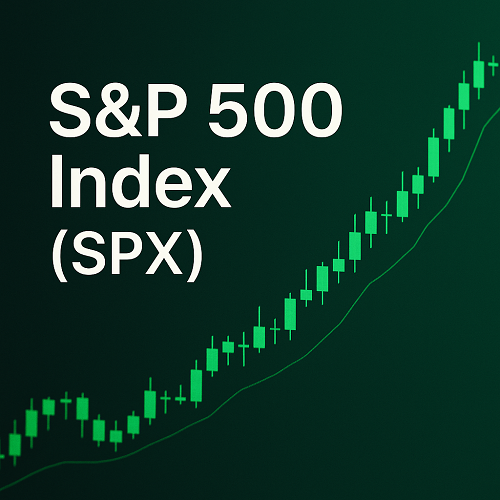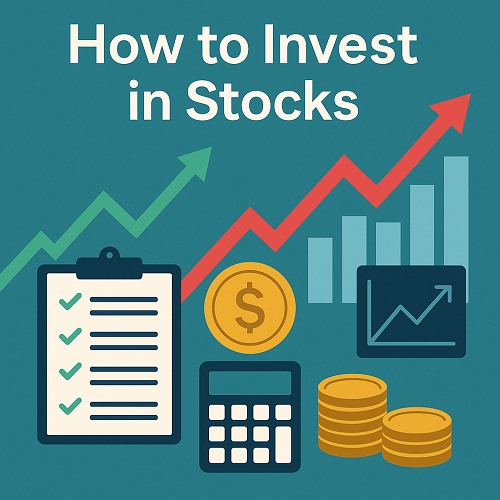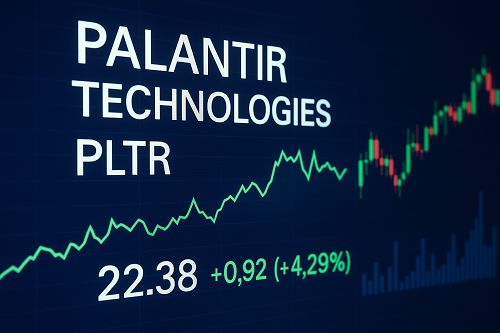Eli Lilly & Company (ticker LLY) has become one of the most closely followed pharmaceutical stocks in 2025, driven by its leading position in weight-loss and metabolic therapies (e.g. Mounjaro, Zepbound) and a deep pipeline spanning neuroscience, oncology, and immunology. With the Eli Lilly stock price capturing significant attention, its growth trajectory, paired with the high valuation and potential regulatory challenges, makes LLY a compelling — yet nuanced — investment case.
This deep-dive article will equip investors and traders with everything they need to understand LLY: from fundamentals and catalysts to risk management and trading strategies.
Company Overview & Business Model
- Headquarters & Scope: Eli Lilly & Co. is an Indianapolis, Indiana–based global pharmaceutical firm.
- Core Segments: The company develops, manufactures and markets human pharmaceuticals in multiple therapeutic areas: metabolic diseases (diabetes, obesity), oncology, immunology, neuroscience, and more.
- Geographic Reach: Its products are sold in 120+ countries through a mix of direct operations and partnerships.
- Leadership: David A. Ricks serves as CEO and Chair, leading strategic growth efforts and major investments.
Eli Lilly’s business model is characterized by:
- Heavy R&D investments, particularly in next-gen therapies (GLP-1, Alzheimer’s, gene therapies).
- A shift toward high-margin, repeat-revenue specialty drugs (vs. commodity generics).
- Scale and integration of manufacturing and supply chains to support global launches.
Recent Performance & Market Sentiment
Stock Behavior
- As of the latest trading sessions, LLY trades around $845–$855 USD (though it fluctuates).
- Over the past 52 weeks, the range has been approximately $623.78 to $937.00.
- Trading volume has varied, with periods of stronger institutional activity.
News & Sentiment
- Expansion Moves: Lilly recently announced it will invest over $1 billion in India to expand contract manufacturing and build a quality hub in Hyderabad.
- Analyst attention: The company’s stock features regularly in analyst coverage and research platforms.
- Regulatory / leadership shifts: Former FDA official Peter Marks recently joined Lilly in a senior role, boosting regulatory and development credibility.
- Profit forecast boost: In August 2025, Lilly raised its full-year profit forecast, citing strength in its weight-loss drugs.
- Recent stock underperformance: On certain sessions, LLY has underperformed broader markets. MarketWatch
Overall, market sentiment around LLY remains cautiously optimistic, punctuated by occasional pullbacks due to execution or demand concerns.
Fundamental Analysis
Revenue & Earnings Trends
- Top-line growth: In 2024, Lilly reported revenues around $45 billion, and for 2025, it has guided a range between $58–61 billion, driven by strong demand for its metabolic/GLP-1 class drugs.
- Earnings per share: Analysts expect strong EPS growth (e.g., next-year earnings growth projected at ~30 %+ on Yahoo’s estimates).
- Profit margins: Lilly is capable of extremely high gross margins on its specialty drugs, although variable with R&D loads and competitive pressure.
Profitability & Margins
- Lilly’s high-margin business (specialty pharmaceuticals) helps deliver strong operating margins when execution is solid.
- Return on equity, net profit margins, and gross margins all trend above industry averages in favorable quarters.
Balance Sheet & Cash Flow
- Lilly maintains a robust balance sheet with the ability to fund acquisitions, R&D, and expansion.
- Free cash flow is a critical metric, given the capital intensity of drug development and regulatory hurdles.
- Debt levels are manageable relative to cash generation, giving flexibility in turbulent times.
Dividend & Shareholder Returns
- Dividend yield: Currently modest (approx. 0.7 %–1 %), reflecting Lilly’s focus on reinvestment.
- Payout ratio: Sustainable in the context of earnings; lower than value plays but acceptable given growth strategy.
- Share repurchases & insider activity: Lilly has selectively repurchased shares in strong quarters; insiders and institutions hold a significant stake.
Product Portfolio & Pipeline
Flagship Drugs & Growth Drivers
- Mounjaro / Zepbound (tirzepatide): These GLP-1 / dual agonist therapies are core growth engines in diabetes and obesity segments.
- Trulicity, Humalog, Jardiance: Backbone products in diabetes and cardiovascular disease.
- Oncology / Immunology: Products such as Verzenio, Taltz, Olumiant contribute diversification.
- Newer entrants: Lilly is pushing in Alzheimer’s (donanemab / Kisunla), neuroscience, and gene therapies.
Key Development Programs
- Lilly’s pipeline includes promising early-to-mid stage molecules targeting cardiometabolic, neurology, and rare disease targets.
- Orforglipron: An oral GLP-1 candidate currently under study; data show ~12.4 % average weight loss over 72 weeks, though short of markets’ expectations relative to Wegovy.
- Gene therapies and AI-based discovery platforms: Lilly is investing in partnerships and acquisitions to accelerate innovation.
Competitive Landscape & Risks
- Primary competitor: Novo Nordisk (Wegovy, Ozempic) remains a challenger in the GLP-1 / obesity space.
- Generic entrants / biosimilars: Over time, price erosion as patents expire could pressure margins.
- Regulatory & reimbursement risk: Payer pushback, political pressure on drug pricing, or stricter FDA scrutiny can affect revenue.
- Clinical failure risk: As with all biotech, pipeline attrition is a major risk.
SWOT Analysis
| Strengths | Weaknesses |
|---|---|
| Leading position in GLP-1/metabolic drugs with blockbuster potential | High valuation, leaving less room for error |
| Deep R&D capability and financial flexibility | Dependence on a few blockbuster drugs |
| Strong gross margins on specialty drugs | Regulatory / pricing risk in U.S. and globally |
| Global reach and expanding manufacturing footprint | Pipeline risk and competition from incumbents |
| Opportunities | Threats |
|---|---|
| Expansion in India manufacturing, penetration in emerging markets | Regulatory shifts, drug pricing reforms |
| Oral GLP-1 and next-gen pipeline breakthroughs | Patent cliffs / generics / biosimilars |
| Acquisitions, AI/ML discovery acceleration | Competition from big pharma and biotech disruptors |
| Growth in Alzheimer’s, neuroscience, gene therapy | Market volatility, macro / inflation headwinds |
Analyst Ratings & Price Targets
- According to Yahoo Finance’s “Analysis” page, top analysts have projected significant upside, with many maintaining Buy / Overweight ratings.
- Benzinga reports a consensus 12-month price target near $934.09, implying ~10–15 % upside from current levels.
- MarketBeat’s consensus rating is Moderate Buy with a price target ~$943.
- Some analysts (e.g. Morgan Stanley, Guggenheim) maintain bullish stances on LLY’s longer-term growth potential.
It’s important to interpret these ratings in light of valuation multiples, growth assumptions, and risk profiles.
Valuation & Forecasts
Comparable Peers
Key peers to compare against:
- Novo Nordisk (NVO) — direct GLP-1 / metabolic competitor
- Johnson & Johnson (JNJ) — broader diversified pharma
- Pfizer (PFE), AstraZeneca (AZN) — large-cap pharma benchmarks
You want to compare P/E, EV/EBIT, Price/Sales, PEG, growth rates, and R&D spend.
Discounted Cash Flow (DCF) Scenario (Illustrative)
Below is a simplified DCF scenario (you should plug in your own assumptions):
- Forecasted free cash flow growth: 10–20 % for 5 years, tapering to stable growth 3 %
- Discount rate (WACC): 7–9 %
- Terminal growth: 2–3 %
Based on those, you may derive an intrinsic value in the range of $900–1,100 per share (depending on assumptions). This supports some of the bullish analyst targets.
Upside / Downside Scenarios
| Scenario | Price Estimate | Key Assumptions / Risks |
|---|---|---|
| Base | 900–1,000 | Execution on Mounjaro / Zepbound, moderate growth |
| Bull | 1,100+ | Successful oral GLP-1, regulatory tailwinds |
| Bear | 700–800 | Regulatory clampdowns, weaker demand, competition |
Technical & Sentiment Analysis
Price Trends & Patterns
- Examine moving averages (50-day, 200-day), trendlines, and whether LLY is in ascending or consolidating phases.
- Watch support zones near ~$800–820 and resistance near recent highs ~$930.
Volume, Momentum & Indicators
- Analyze Relative Strength Index (RSI), MACD, and on-balance volume to detect strength or overbought/oversold conditions.
- Monitor volume spikes that may indicate institutional accumulation or liquidation.
Options Market & Sentiment
- Large open interest in out-of-the-money calls can signal bullish expectation; skew levels and implied volatility should be tracked.
- Short interest, days-to-cover, and put/call ratios add insight into sentiment pressures.
Catalysts & Risk Factors
Upcoming Catalysts
- Clinical readouts (especially for oral GLP-1, Alzheimer’s candidates).
- New drug approvals or label expansions.
- Further supply chain expansions (e.g., in India).
- Regulatory / policy changes (e.g., U.S. drug pricing reform).
- Strategic acquisitions or partnerships.
Key Risks
- Regulatory / Pricing Pressure: Major reforms or pricing constraints could erode margins.
- Clinical Failures: High R&D weight means any trial failure could be punitive.
- Patent Expirations: Future revenue erosion from generics.
- Competition: From Novo, Pfizer, biotech startups.
- Macro / Market Risk: Inflation, interest rates, currency swings, healthcare policy changes.
How LLY Compares to Its Peers
- Relative to Novo Nordisk, Lilly has a more diversified pipeline beyond just metabolic drugs.
- Its valuation metrics (P/E, PEG) are higher, reflecting growth expectations; peers may offer lower multiple but less upside.
- Diversification (oncology, immunology, neuroscience) gives Lilly resilience to sector rotation relative to a pure GLP-1 play.
- However, peer companies may face lower regulatory risk or have more stable cash flows.
Investment Strategies & Positioning
Long-Term Core Holding
- If you believe in Lilly’s long-term pipeline and secular trends in obesity/metabolic diseases, LLY is a core biopharma growth asset.
- Consider scaling in over time, given valuation sensitivity.
Tactical / Moderate Risk Play
- Enter with partial position; use options to hedge (e.g. protective puts).
- Monitor news flow closely (clinical data, regulatory).
- Consider trailing stop-loss to protect on downside.
Portfolio Allocation & Risk Sizing
- Given its high valuation and biotech risk, it may be prudent not to overweight LLY beyond ~5–10 % of a growth-oriented equity allocation.
- Hedge exposure with broader healthcare ETFs or counter-cyclical sectors.
Conclusion & Recommendation
Eli Lilly (LLY) is one of the most compelling and dynamic names in the pharmaceutical sector in 2025. Its dominance in the metabolic / GLP-1 space, robust pipeline, and strong balance sheet support a bullish thesis — provided execution holds. However, the high valuation leaves little room for missteps, and regulatory / pricing risks remain real.
Recommendation (as of October 2025):
- For long-term investors: a hold / moderate accumulate stance is reasonable, especially if you believe in Lilly’s innovations.
- For more aggressive investors: a partial long allocation with options hedges may be prudent.
- Use stringent risk controls: monitor regulatory headlines, clinical trial results, and valuation multiples relative to fundamentals.





 XAUT-USD
XAUT-USD  AMD
AMD  MARA
MARA  SHOP
SHOP  BULL
BULL  CL=F
CL=F